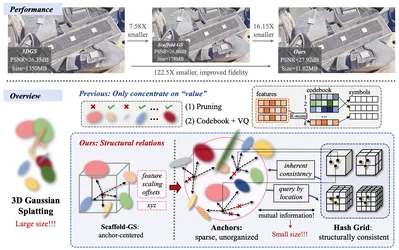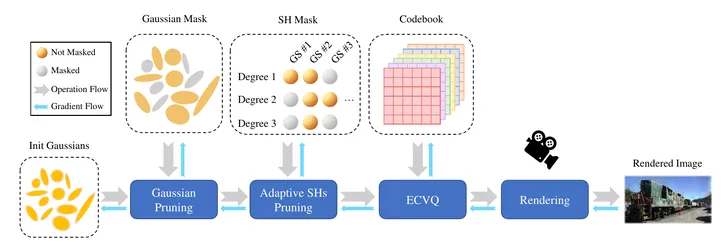3DGS.zip: A survey on 3D Gaussian Splatting Compression Methods

Eurographics 2025 STAR (Computer Graphics Forum)
We present a work-in-progress survey on 3D Gaussian Splatting compression methods, focusing on their statistical performance across various benchmarks. This survey aims to facilitate comparability by summarising key statistics of different compression approaches in a tabulated format. The datasets evaluated include Tanks and Temples, Mip-NeRF 360, Deep Blending, and Synthetic NeRF. For each method, we report the Peak Signal-to-Noise Ratio (PSNR), Structural Similarity Index (SSIM), Learned Perceptual Image Patch Similarity (LPIPS), and the resultant size in megabytes (MB, 10^6 bytes), as provided by the respective authors. This is an ongoing, open project, and we invite contributions from the research community as GitHub issues or pull requests.

























